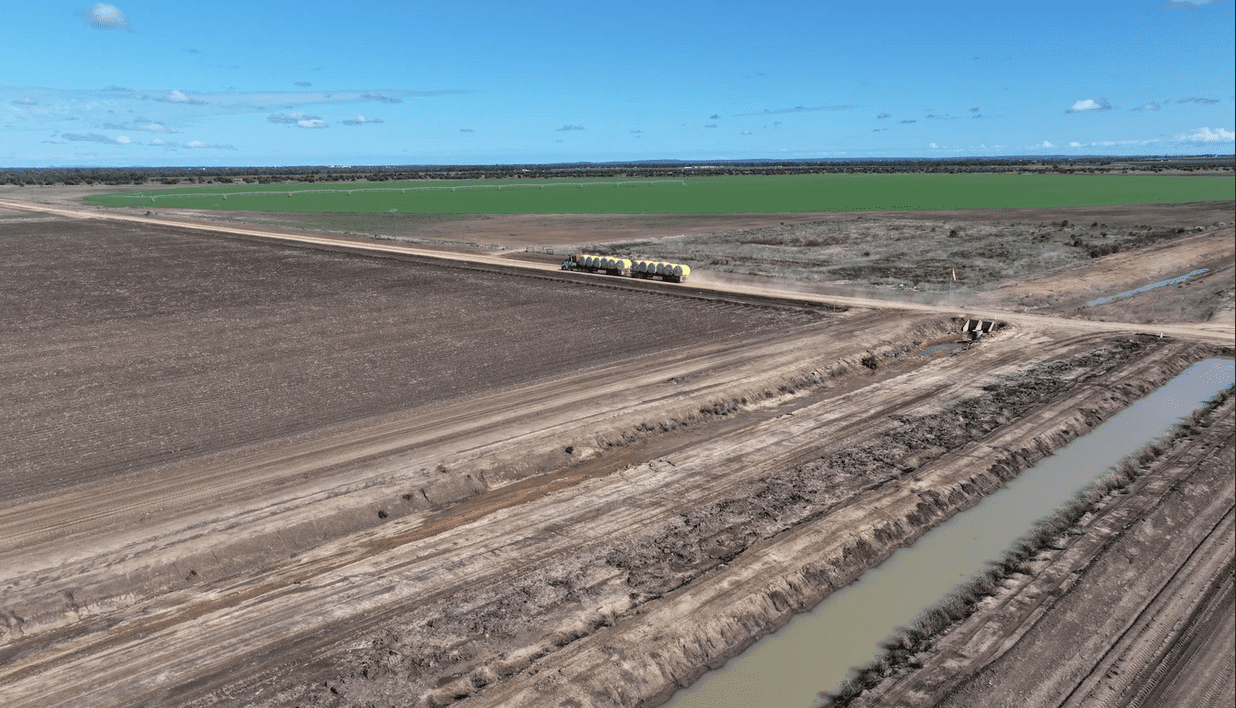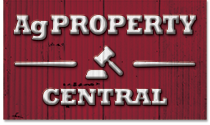
Hauling cotton modules out of CQ property Codenwarra West under its previous owner Qld Cotton. Photo: Ray White Rural
MARKET activity for rural land developed to cotton production is the focus of a new report by Herron Todd White Central Queensland valuer Will McLay.
Cotton production in Australia extends north from Deniliquin in southern New South Wales to Emerald in Central Queensland, with frontiers emerging in Qld’s Gulf, the Ord River Irrigation Area in the northern part of Western Australia, and Katherine in the Northern Territory.
In the latest Month in Review report, Mr McLay said water has become a key component of value within these irrigated cropping assets, and at times can attract a level of demand far higher than the land itself.
“With scarcity emerging of both land and water in long-established growing regions, cotton farmers have sought out land in new geographic regions which benefits from more secure water and, on face value at least, better affordability, however this comes with seasonal and logistical challenges.”
Mr McLay reports seasonal conditions across most cotton regions have been favourable this year, although mixed.
“They have ranged from very dry in the south, to wet in the central and northern regions, which has in some cases impacted yields and downgraded quality.”
Southern NSW
Mr McLay said the irrigated row crop property market in southern NSW was relatively quiet in the late part of 2024 and early 2025, with only smaller transactions occurring in the Murray Irrigation Area and Riverina.
“Above-average cotton yields over the past two years, coupled with consistent water allocations and reasonable temporary water prices, have led to good regional returns.”
“To this end, quality irrigated holdings have generally remained tightly held with only a few smaller transactions occurring in the market,” he said.
The most recent and significant irrigation sale was the Commins Aggregation near Whitton, south of Griffith, spanning a 2800ha portfolio across 10 holdings.
It sold in July 2024 to Jacky Cheung, a private investor with other significant irrigated and non-irrigated holdings in New South Wales, for around $88 million including significant water entitlements.
Mr McLay said the properties were very well developed with automated bankless channels, and the irrigation developed areas reflected a rate of $12,000 per hectare, excluding water.
Macintyre Valley/Darling Downs
While land value growth in this region has stabilised over the past 12 months, Mr McLay said water markets have been subject to an extremely high level of positive growth in recent times.
“This has primarily been driven by the Commonwealth Government’s decision to actively acquire water entitlements from the Border Rivers area as part of the Strategic Water Purchasing Framework.”
“As a result, scarcity of water in these schemes has increased and both corporate and private buyers have been active, with a high level of competition to secure water to support irrigation developments on existing farms.”
Mr McLay said while the market value uplift in water values has been created by a somewhat external influence, values should be underpinned by the scarcity of supply.
Key sales include southern Qld’s 26,855ha Worral Creek Aggregation, boasting 65,900ML of water entitlements, is an irrigated and dryland cotton asset comprising seven non-contiguous properties across four hubs. It was purchased by Melbourne-based Warakirri Asset Management and Alkira Farms, a subsidiary of US-based global agricultural investment company Farmland Reserve.
Mr McLay said the $340M sale price reflects a rate of $9400/ha, excluding water, for the developed irrigation component, and values up to $12,000/ML for the Class A water entitlements.
The sale included 625ha of winter cereal crops including wheat and barley, along with three water allocations totalling 1412ML and a 1037ML floodplain harvesting entitlement.
Mr McLay’s analysis shows values of $7200/ha, excluding water, for the developed irrigation area, $12,000/ML for the Class A water and $7000/ML for the Class B water entitlements.
Central Qld
CQ cotton grows around Theodore and Moura on the Dawson River, and in the Emerald area within the upper Fitzroy Basin catchment.
Mr McLay said there were fewer farms relative to the Murray-Darling area, which results in
a more thinly traded market.
One of the few recent sales was Emerald’s 3443ha Codenwarra West, which sold for just over $20M on a bare basis, excluding water, crop, plant, and machinery.
The 4319ML of water allocation in six licences was secured by Cowal Agriculture Holdings, a subsidiary of Macquarie Asset Management, for $21.6M, or $5000/ML.
Mr McLay said analysis of this sale reflects a rate of $7000/ha, excluding water, for the developed irrigation land, which is marginally lower than corresponding land in the Border Rivers and southern growing districts.
“Codenwarra West previously sold (in 2019) for $18M (inclusive of water entitlements) and after adjustments for inclusions in each transaction, the recent sale indicates a 135 percent increase on the previous sale.”
Northern emerging locations
Mr McLay said after a run of property purchases during 2022 and 2023 for conversion to cotton across northern Australia, there have been very few subsequent sales despite good buyer appetite.
“Infrastructure has been developed to support the expansion of cotton in these locations, including a gin in Katherine and another in Kununurra due for completion in the coming months.”
HTW Darwin-based valuer Frank Peacocke reports strong competition in the Ord River Irrigation Area in the northern part of Western Australia where there is abundant and secure water and a limited supply of irrigation country.
Recently, a number of real estate agents told Grain Central demand for cotton country has not been a driver around the Katherine region where a number of freehold properties with cotton-growing potential are currently listed for sale.
They report fodder production is trumping cotton in the wake of dry conditions across parts of NSW, Victoria, and South Australia.
There is no doubt, properties growing irrigated cotton attract more interest than those growing dryland cotton – in other words, holdings that have existing infrastructure such as bores, pipes, and centre pivots, and offer access to water.
While they might prove more expensive, irrigation removes the vagaries of rainfall which ultimately impact yields.
Grain Central: Get our free news straight to your inbox – Click here

HAVE YOUR SAY